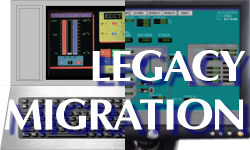 When an organization has taken the initiative to perform a system migration, it is not a decision made lightly. Legacy migrations are not commonly performed because of the cost that the organization incurs. And so after coming to terms and considering all the pros and cons, there is a check list to perform prior to a legacy migration.
When an organization has taken the initiative to perform a system migration, it is not a decision made lightly. Legacy migrations are not commonly performed because of the cost that the organization incurs. And so after coming to terms and considering all the pros and cons, there is a check list to perform prior to a legacy migration.
Firstly, the organization must inquire and decide on the legacy migration method they wish to carry out. There are several legacy migration methods that organizations can choose from; straight migration, migration by extension and upgrade inclusion migration.
Should they choose to perform a straight migration, they will be moving the current legacy system as it is, without any upgrades whatsoever to the system. This method of legacy migration is mostly done by an organization that is completely satisfied with their system and how it handles operations. It focuses mostly on improving efficiency in terms of performance of the system and reducing the maintenance costs of the legacy system.
Another method of legacy migration is by extension. Regardless of whether the organization is completely satisfied with the current system, there may be a component that cannot be upgraded and thus requires an additional aspect added to the legacy system. With the system running inefficiently, there is cost to the organization. An extension to the system makes the legacy system more cost effective.
And finally there is legacy migration with the inclusion of an upgrade. Unlike that of the extension, the features of the legacy system are moved into the new system, and some new features are added on. Furthermore, the old features are reviewed. Usually this is done because the objectives that the legacy system was reaching have significantly changed and requires the upgrades to capture the entire scope of change. Another reason could be that the inefficiency of the legacy system’s features bite into the profits of the organization. Upgrading would result in more cost efficient running of the system.
In addition to establishing which method of performing legacy migration there are other aspects of the legacy system that should be captured before performing the legacy migration. It should be identified, i.e. the users that will come into contact with the system. One should question whether they will all be able to complete what they need to after the legacy migration. Establishing their roles comes in second to identifying them. Sometimes, without identifying those who are significant to the system, it can be migrated and the wrong audience is considered making the legacy migration an entire flop. Then comes those who are not to be included into the system even after the legacy migration. This is the system security aspects. There should be no loopholes to the system that will allow unauthorized entry to the system. Identifying these parties will simplify blocking any routes for infiltrating the system.
